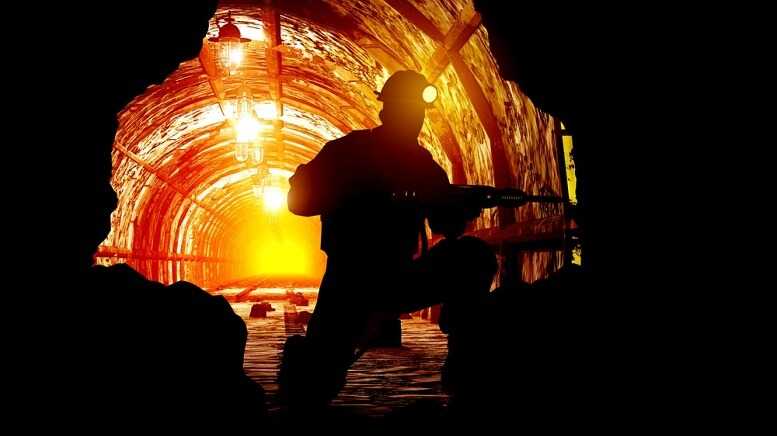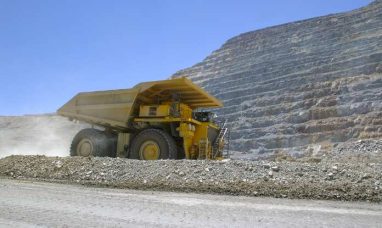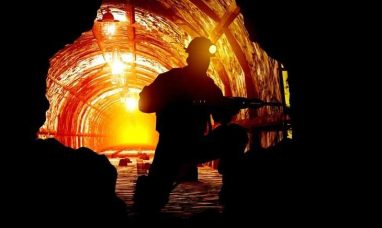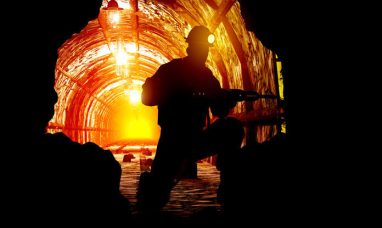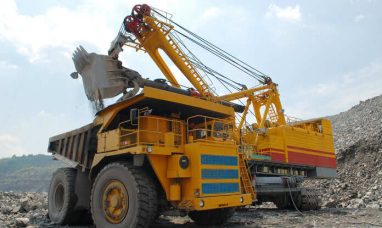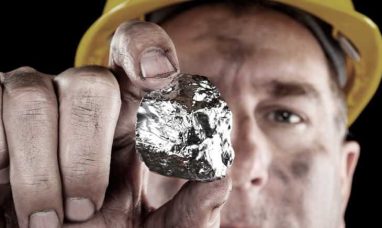TSX SYMBOL: FCU
OTCQX SYMBOL: FCUUF
FRANKFURT SYMBOL: 2FU
First new exploration program since 2017 will focus on Patterson Corridor
KELOWNA, BC, Dec. 6, 2023 /CNW/ – FISSION URANIUM CORP. (“Fission” or the “Company“) is pleased to announce preparations are underway for a 13-hole, ~6,000m winter exploration program at its award-winning PLS high-grade uranium project in Canada’s Athabasca Basin. The drill program will focus on seven high priority exploration target areas along the Patterson Lake Corridor. It is anticipated that the drill program will commence by mid-January, 2024.
Ross McElroy, President, and CEO for Fission, commented, “We are preparing our first pure exploration drill program since commencing mine and mill development at the PLS high-grade uranium project. Fission Uranium won multiple awards for the Triple R discovery at PLS, and our team of veteran uranium explorers, led by VP of Exploration, Kanan Sarioglu, is second to none. With most of our large property underexplored, we believe the potential exists for further major discoveries, and this will be the primary focus of winter exploration.”
“We do of course have an incredible deposit currently advancing towards production. Importantly, this deposit remains open in multiple directions and along trend, so we will also be investigating the potential for new mineralized zones along strike and parallel to the Triple R. Our team is hard at work on drill targeting and site preparation, and we expect drill rigs on site in early 2024.”
Target Area Details: Patterson Lake Corridor
The Patterson Lake Corridor is a large east northeast – west southwest trending conductive lithological-structural corridor and hosts some of the Athabasca Basin’s most economically important uranium deposits, including Fission’s Triple R and NexGen’s Arrow deposits. Airborne and ground geophysical surveys have identified a number of discrete basement hosted electromagnetic “EM” conductors, that are approximately parallel to the trend of the corridor. These EM conductors are often interpreted to represent graphitic shear zones, and Athabasca-type structurally controlled uranium deposits, such as the Triple R deposit, are often associated within favorable locations along such graphitic shear zones. Seven discrete target areas have been selected to be tested as part of the winter 2024 regional exploration program.
- Pistol Target: Located on the northern side of the Patterson Lake Corridor and ~450m northwest of the Triple R’s R780E zone, the target area is associated with a coincident 400m long radon in water anomaly and where the interpretation from an airborne geophysical survey suggests a similar signature and spatial relationship between NexGen’s Arrow and Arrow South to the Pistol target and the Triple R deposit, respectively. Historic nearby drilling in 2014 intersected broad zones of anomalous uranium and boron up-dip of the target zone, which may be reflecting mineralization at depth. Two holes in 1,550m will test this encouraging target.
- Holster Target: Located on the northern side of the Patterson Lake Corridor and ~600m north of the R840W, this target will test an area where historical drilling intersected anomalous uranium and boron concentrations in a strongly graphitic shear zone. Similar to the Pistol target, drilling will test for deeper uranium mineralization along the northeast-southwest EM conductor where a sharp conductivity thickness gradient occurs coincident with an interpreted north-northeast cross-cutting fault. One drillhole is planned at this target, totaling 600m.
- East Extension Target: Located in the central region of the Patterson Lake Corridor, the target area is ~900m east of the easternmost R1620E zone along the same EM conductor that hosts the Triple R deposit. The nearest historical drillhole to this target is PLS14-152, a vertical drillhole located approximately 140m to the west which intersected a silicified zone overlying an apparently thick, unaltered, graphitic shear zone. A sharp conductivity gradient is now being targeted east of PLS14-152, interpreted to reflect hydrothermal alteration associated with uranium mineralization and the destruction of graphite within the shear zone. One drillhole is planned at this target, with an estimated total depth of 330m.
- Bridle & Saddle Targets: These two target areas are located ~1.4km west and 2.9km west, respectively, of the R1515W zone, along strike of the Triple R deposit. Prospective features present at both target areas include a northeast trending EM conductor that is crosscut by an interpreted north-northeast trending cross fault. There is also a sharp conductivity gradient near the cross faults and as with other drill targets previously described, this is interpreted to reflect the destruction of graphite by hydrothermal alteration which may be associated with uranium mineralization. Three drillholes are planned at these targets, totaling 960m.
- Far West Targets: The Far West targets are located ~3.7km and 4.2km west of the R1515W zone. Prospective features present at both of target areas include a northeast trending EM conductor that is crosscut by an interpreted north-northeast trending resistivity structure. No historic drilling has ever been conducted in this area and thus, the Far West targets are completely untested. Two drillholes are planned at these targets, totaling 630m.
- Saloon Target: The Saloon target area is located ~5km to the SW of the Triple R deposit where historical drilling encountered the most anomalous uranium concentrations on the PLS property outside of the Triple R deposit. Three drillholes will target uranium mineralization down-dip and on-strike of historical drillhole PLS17-550 (5.0m @ 0.011% U3O8 including 0.5m @ 0.03% U3O8). An additional drillhole is planned along trend 3km to the northeast, testing the intersection of a major north-south trending interpreted fault zone and the PLG-4A EM conductor. Historical drilling by Fission along the PLG-4A EM conductor in 2015 and 2016 intersected intense hydrothermal alteration and brittle-ductile deformation which the Company considers comparable to the hanging wall of the Triple R deposit. Approximately 500m west along trend of this drillhole, and within the Saloon target area, a single radon in water sample was collected from a small spring in 2008 which returned a highly anomalous value 162 pCi/L. For comparison, the highest radon in water value recorded over the Triple R deposit was 14.4 pCi/L. A total of 4 holes in 1,930m are planned for this target area. All of the planned drillholes at the Saloon target are interpreted to be within a major interpreted shear zone that may represent the true southern boundary of the Patterson Lake Corridor.
Uranium mineralization of the Triple R deposit at PLS occurs within the Patterson Lake Conductive Corridor and has been traced by core drilling over ~3.18km of east-west strike length in five separated mineralized “zones”, which collectively make up the Triple R deposit. From west to east, these zones are R1515W, R840W, R00E, R780E and R1620E. Through successful exploration programs completed to date, Triple R has evolved into a large, near-surface, basement-hosted, structurally controlled high-grade uranium deposit. The discovery hole was announced on November 05, 2012, with drill hole PLS12-022 from what is now referred to as the R00E zone.
The R1515W, R840W and R00E zones make up the western region of the Triple R deposit and are located on land, where overburden thickness is generally between 55 m to 100 m. R1515W is the westernmost of the zones and is drill defined to ~90m in strike length, ~68m across strike and ~220m vertical and where mineralization remains open in several directions. R840W is located ~515m to the east along the strike of R1515W and has a drill-defined strike length of ~430m. R00E is located ~485m to the east along strike of R840W and is drill defined to ~115m in strike length. The R780E and R1620E zones make up the eastern region of the Triple R deposit. Both zones are located beneath Patterson Lake, where water depth is generally less than six metres, and overburden thickness is generally about 50m. R780E is located ~225m to the east of R00E and has a drill-defined strike length of ~945m. R1620E is located ~210m along strike to the east of R780E and is drill defined to ~185m in strike length.
Mineralization along the Patterson Lake Corridor trend remains prospective along strike in both the western and eastern directions. Basement rocks within the mineralized trend are identified primarily as mafic rocks with varying degrees of alteration. Mineralization is both located within and associated with mafic volcanic intrusives with varying degrees of silicification, metasomatic mineral assemblages and hydrothermal graphite. The graphitic sequences are associated with the PL-3B basement EM conductor.
The 31,039-hectare PLS project is 100% owned and operated by Fission Uranium Corp. PLS is accessible by road with primary access from all-weather Highway 955, which runs north to the former Cluff Lake mine.
The technical information in this news release has been prepared in accordance with the Canadian regulatory requirements set out in National Instrument 43-101 and reviewed on behalf of the company by Ross McElroy, P.Geol., President and CEO for Fission Uranium Corp., a qualified person.
Fission Uranium Corp. is an award-winning Canadian-based resource company specializing in uranium exploration and development. The company is the owner and developer of the PLS uranium project – a proposed high-grade mine and mill located in the Athabasca Basin, Saskatchewan, Canada. The company is headquartered in Kelowna, British Columbia. Fission’s common shares are listed on the Toronto Stock Exchange under the symbol “FCU” and trade on the OTCQX marketplace in the U.S. under the symbol “FCUUF.”
ON BEHALF OF THE BOARD
“Ross McElroy”
___________________________
Ross McElroy, President and CEO
Cautionary Statement:
Certain information contained in this press release constitutes “forward-looking information”, within the meaning of Canadian legislation. Generally, these forward-looking statements can be identified by the use of forward-looking terminology such as “plans”, “expects” or “does not expect”, “is expected”, “budget”, “scheduled”, “estimates”, “forecasts”, “intends”, “anticipates” or “does not anticipate”, or “believes”, or variations of such words and phrases or state that certain actions, events or results “may”, “could”, “would”, “might” or “will be taken”, “occur”, “be achieved” or “has the potential to”. Forward looking statements contained in this press release may include statements regarding the use of proceeds of the Offering, and the future operating or financial performance of Fission and Fission Uranium which involve known and unknown risks and uncertainties which may not prove to be accurate. Actual results and outcomes may differ materially from what is expressed or forecasted in these forward-looking statements. Such statements are qualified in their entirety by the inherent risks and uncertainties surrounding future expectations. Among those factors which could cause actual results to differ materially are the following: market conditions and other risk factors listed from time to time in our reports filed with Canadian securities regulators on SEDAR+ at www.sedarplus.com. The forward-looking statements included in this press release are made as of the date of this press release and the Company and Fission Uranium disclaim any intention or obligation to update or revise any forward-looking statements, whether as a result of new information, future events or otherwise, except as expressly required by applicable securities legislation.
SOURCE Fission Uranium Corp.

Featured image: DepositPhotos © lurii



